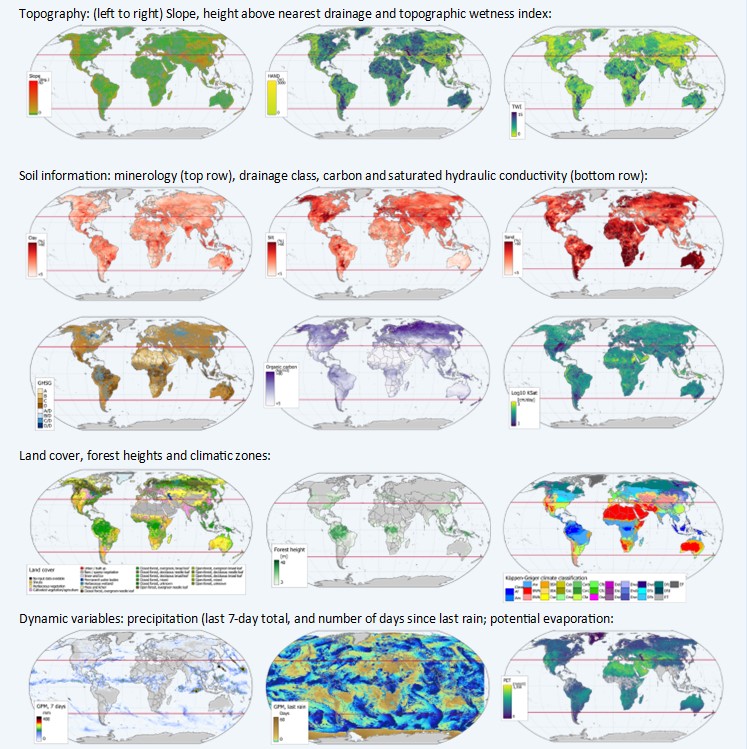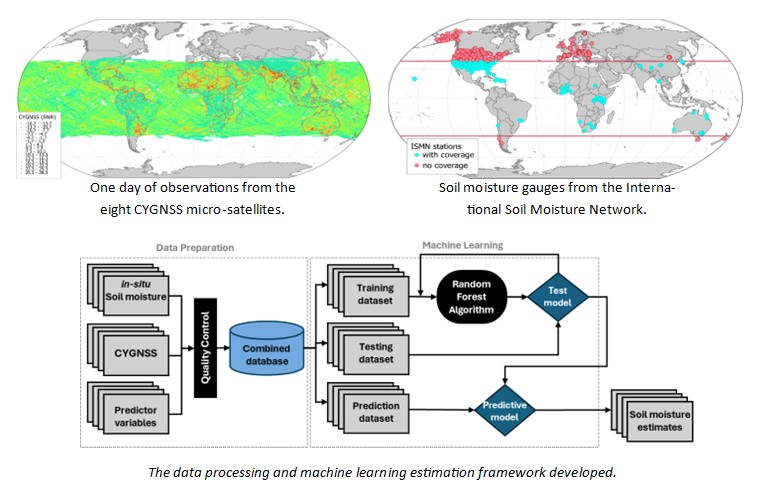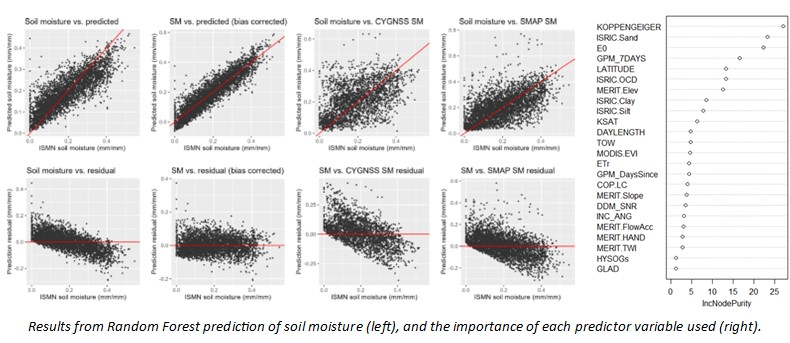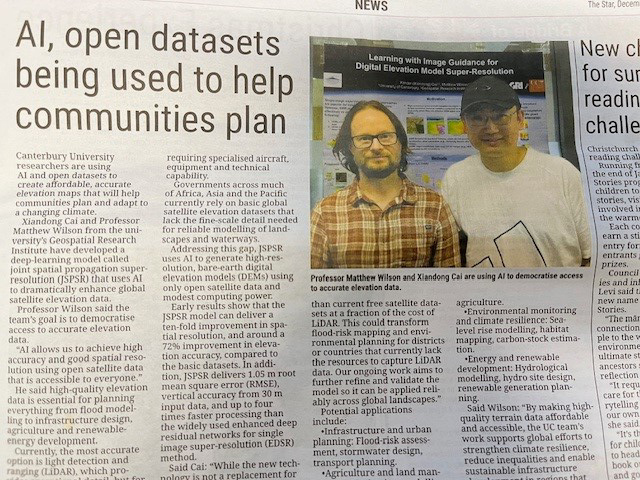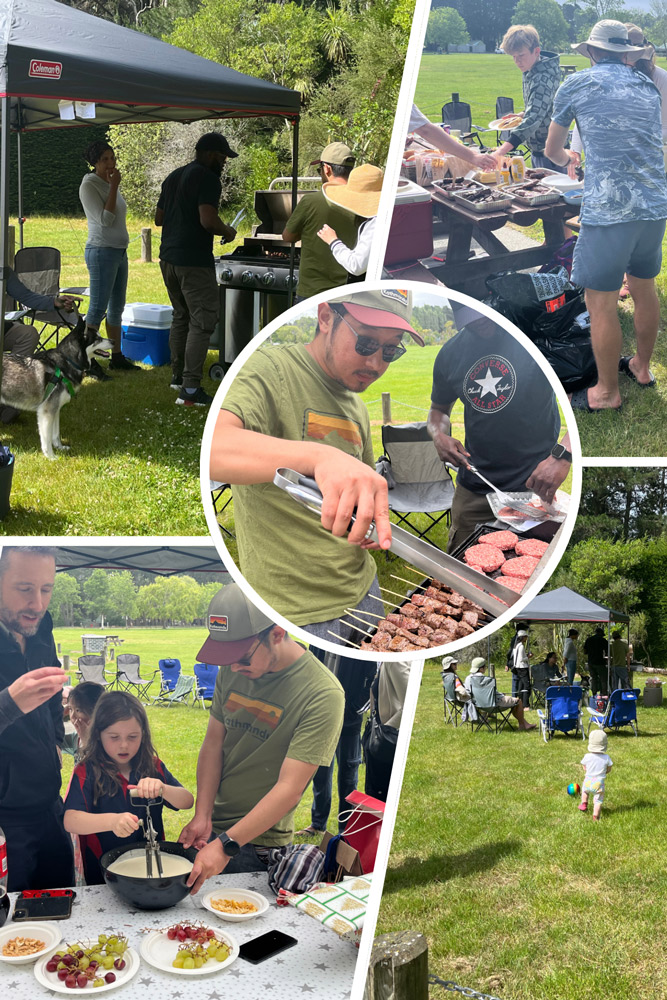PhD Student
Matthew Wilson (GRI– UoC)
Rajasweta Datta (GRI-UoC)
Sharmila Savarimuthu (GRI-UoC)
Funding
MBIE Catalyst programme.
Project summary
Soil moisture is an important controlling factor in vegetation health and is a significant component of catchment hydrology. Regular soil moisture monitoring across agricultural areas helps to quantify irrigation and check for signs of crop distress, for example using gauges which are part of the International Soil Moisture Network (ISMN). However, gauges provide point-based measurements of soil moisture and there are large gaps in coverage.
Remote sensing is able to provide estimates of soil moisture to address this issue, and the use of microwave frequencies have shown excellent potential since they are not subject to cloud cover, and have found to be sensitive to soil dielectric properties. Sensors such as NASA’s Soil Moisture Active Passive (SMAP) and ESA’s Soil Moisture Ocean Salinity (SMOS) provide accurate soil moisture estimates, but at coarse spatial (around 40 km) and temporal (2-3 days) resolutions. As an alternative, the Cyclone Global Navigation Satellite System (CYGNSS) is a constellation of eight microsatellites which have sensors for recording reflections of signals from the Global Navigation Satellite System (GNSS). These signals have been found to be sensitive to geophysical parameters over land surfaces, and studies have used them for the detection of inland water, inundation mapping and soil moisture estimates.
Motivated by the development of algorithms for the Rongowai mission, we developed a random forest model to predict soil moisture at the field scale (~1 km), combining 6.5 years of CYGNSS GNSS-Reflectometry data with observations from 1049 ISMN and several relevant predictor variables (see right). After bias correction, the model was able to predict soil moisture to within 0.048 mm/mm (R2 = 0.82).

